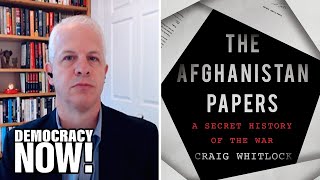Afghanistan War $2.3 Trillion FUBAR
The Afghanistan Papers, A Secret History of the the War, Craig Whitlock, 2021
…it (this book) is an attempt to explain what went wrong and how three consecutive presidents and their administrations failed to tell the truth. All told, the Afghanistan Papers is based on interviews with more than 1,000 people who played a direct part in the war. The Lessons Learned interviews, oral histories and Rumsfeld snowflakes comprise more than 10,000 pages of documents…(people) who know that the official version of the war being fed to the American people was untrue, or aggressively sanitized at best.
By 2002, few al-Qaeda followers remained in Afghanistan. Hundreds had been killed or captured, while the rest fled to Pakistan, Iran and other countries. The United States and its allies were left fighting the Taliban and other militants from the region — Uzbeks, Pakistanis, Chechens. So for the next two decades the war In Afghanistan was waged against people who had nothing to do with 9/11.
The problem was that the military had not run a counterinsurgency campaign since the Vietnam War. To figure out what to do, (David) Barno scrounged up three textbooks on counterrevolutionary warfare he had read as a West Point cadet more than twenty-five years earlier. “We had no U.S. military doctrine whatsoever at this point in time by which to guide us.”
“He (Pakistani ISI head Ashfaq Kayani) says, ‘You know, I know you think we’re hedging our bets. You’re right, we are because one day you’ll be gone again, it’ll be like Afghanistan the first time, you’ll be done with us, but we’re still going to be here because we can’t actually move the country. And the last thing we want with all our other problems is have turned the Taliban into a mortal enemy, so, yes, we’re hedging our bets.'”
The table of contents pretty much summarizes this important book
Part One: A False Taste of Victory, 2001–2002
Chapter One: A Muddled Mission
Chapter Two: “Who Are the Bad Guys?”
Chapter Three: The Nation-Building Project
Part Two: The Great Distraction, 2003–2005
Chapter Four: Afghanistan Becomes an Afterthought
Chapter Five: Raising an Army from the Ashes
Chapter Six: Islam for Dummies
Chapter Seven: Playing Both Sides
Part Three: The Taliban Comes Back, 2006–2008
Chapter Eight: Lies and Spin
Chapter Nine: An Incoherent Strategy
Chapter Ten: The Warlords
Chapter Eleven: A War on Opium
Part Four: Obama’s Overreach, 2009–2010
Chapter Twelve: Doubling Down
Chapter Thirteen: “A Dark Pit of Endless Money”
Chapter Fourteen: From Friend to Foe
Chapter Fifteen: Consumed by Corruption
Part Five: Things Fall Apart, 2011–2016
Chapter Sixteen: At War with the Truth
Chapter Seventeen: The Enemy Within
Chapter Eighteen: The Grand Illusion
Part Six: Stalemate, 2017–2021
Chapter Nineteen: Trump’s Turn
Chapter Twenty: The Narco-State
Chapter Twenty-One: Talking with the Taliban
An excellant prequel to this book is Steve Coll’s 2007 Ghost Wars account of how the CIA seeded this next conflict
We seem to have even forgotten how to be Imperialistic Extractive Capitalists by ignoring the vast endowment of natural resources in Afghanistan.
Far more value, however, lies with the country’s endowments of iron, copper, lithium, rare earth elements, cobalt, bauxite, mercury, uranium and chromium. While the total abundance of minerals is certainly vast, scientific understanding of these resources is still at an exploratory stage.Aug 31, 2021
